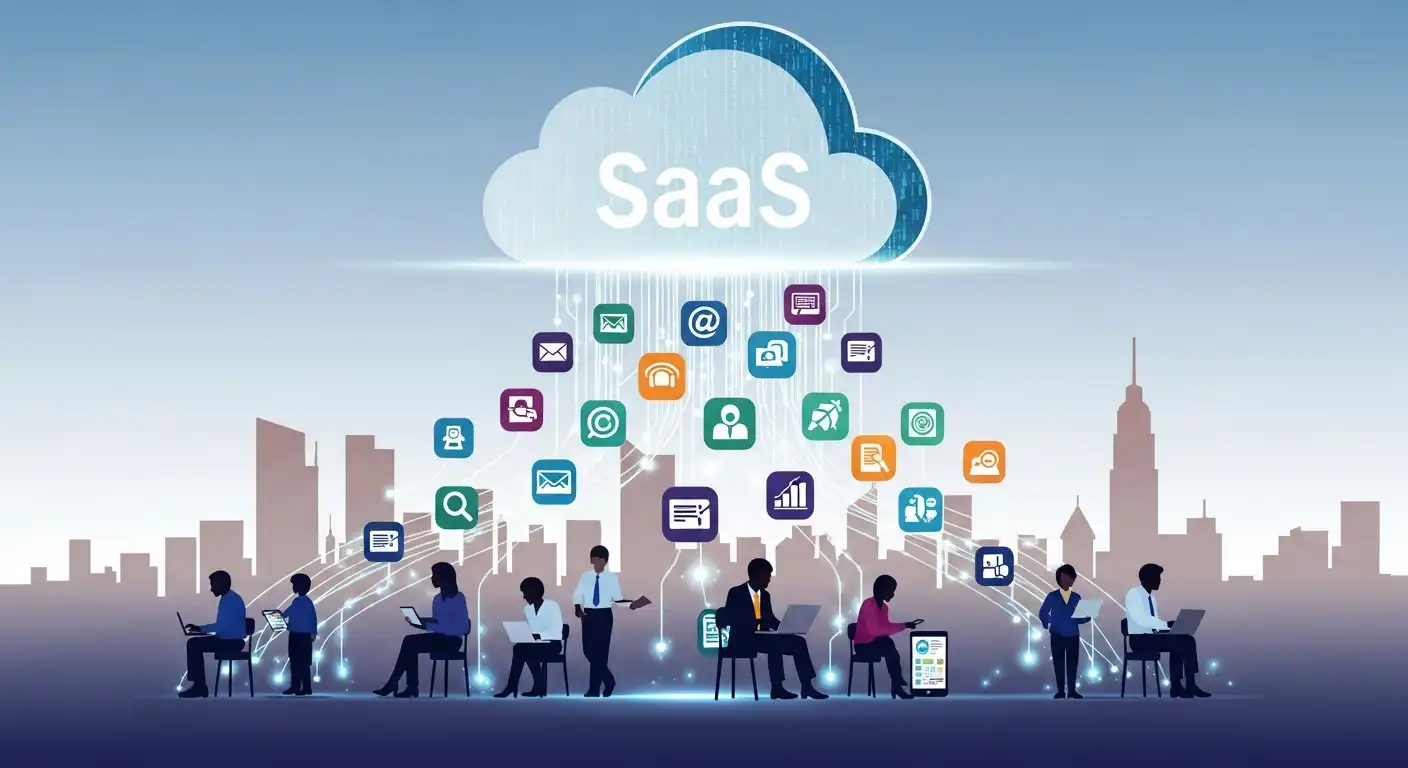Software-as-a-Service (SaaS) is a cloud-based software delivery model where users access software applications over the Internet. The global SaaS market is experiencing rapid growth, driven by the demand for flexible, scalable, and cost-effective software solutions.
Market Overview
The global Software-as-a-Service market is experiencing rapid growth, driven by the demand for flexible, scalable, and cost-effective software solutions. SaaS provides cloud-based software delivery, enabling businesses to access applications over the Internet without requiring traditional software installation and maintenance.
The Techgolly market research team estimates that the global Software-as-a-Service market was valued at least USD 310 billion in 2024 and is projected to reach USD 925 billion by 2030. Growth will continue at a compound annual growth rate (CAGR) of 18%-20% from 2024 to 2030.
The market covers diverse software categories, including customer relationship management (CRM), enterprise resource planning (ERP), human resources management (HRM), collaboration tools, and more. SaaS solutions empower organizations to enhance productivity, streamline operations, and stay competitive in a rapidly evolving business landscape.
Key Market Trends
The Software-as-a-Service market is evolving with several significant trends, including:
Industry-Specific SaaS Solutions
SaaS providers are developing tailored solutions to meet the unique needs of specific sectors, such as healthcare, finance, and education. These industry-specific applications address sector-specific challenges and opportunities, offering a more targeted approach to software solutions.
Artificial Intelligence (AI) Integration
AI is being integrated into SaaS applications to enhance their capabilities by providing automation, data analysis, and predictive insights. SaaS platforms leverage AI to deliver personalized experiences, automate routine tasks, and improve decision-making across various industries.
Security and Data Privacy
Security and data privacy are top priorities in the SaaS market. With the growing emphasis on protecting sensitive data and ensuring compliance with data privacy regulations, SaaS providers invest in robust security measures, encryption, and compliance tools to instill customer confidence.
Remote Work and Collaboration Tools
The rise of remote work has accelerated the demand for collaboration tools within the SaaS ecosystem. Video conferencing, project management, and collaboration solutions are witnessing increased adoption, enabling remote teams to stay connected and productive.
Challenges
The Software-as-a-Service market faces several challenges that must be addressed to ensure its sustained growth and success. Some notable challenges include:
Security Concerns
Security remains a significant challenge in the Software-as-a-Service market. Protecting user data privacy and ensuring compliance with evolving data protection regulations are crucial. SaaS providers must invest in robust security measures and transparent data-handling practices to effectively address these concerns.
Integration Complexity
Integrating SaaS solutions with existing on-premises systems can be complex. Many organizations rely on a mix of traditional and cloud-based software, which can lead to integration challenges. Streamlining these integrations and ensuring seamless data flow across systems is a critical challenge for the SaaS market.
Data Portability and Vendor Lock-In
Data portability and avoiding vendor lock-in are challenges faced by SaaS users. Moving data and applications between SaaS providers, or migrating from SaaS to on-premises solutions, can be complex and costly. Addressing these challenges involves standardizing data formats and offering clear migration paths for customers.
Future Outlook
The Software-as-a-Service market is poised for continued growth, driven by technological advancements, increased reliance on cloud computing, and the need for agile and cost-effective software solutions.
Industry-Specific AI Solutions
AI integration into industry-specific SaaS applications will become more prevalent. Businesses will leverage AI to optimize processes, personalize customer experiences, and extract industry-specific insights.
Data Analytics and Business Intelligence
Data analytics and business intelligence tools within SaaS applications will continue to evolve. Enhanced data visualization, real-time analytics, and advanced reporting capabilities will empower organizations to make data-driven decisions and gain a competitive edge.
Enhanced Collaboration and Remote Work Tools
Collaboration and remote work tools in the SaaS market will continue to undergo further innovation. SaaS providers will focus on enhancing virtual collaboration, ensuring secure and efficient remote work capabilities, and fostering a sense of connectedness among remote teams.
Conclusion
The Software-as-a-Service market is a driving force behind businesses’ digital transformation. Overcoming challenges and staying at the forefront of technological innovation will be pivotal in realizing SaaS’s full potential. The trajectory of the SaaS market’s evolution is intertwined with how we navigate these challenges and harness the transformative power of cloud-based software, ensuring a more connected, efficient, and agile business landscape.





